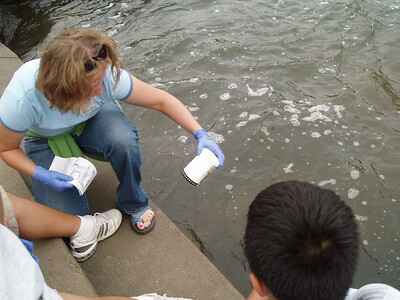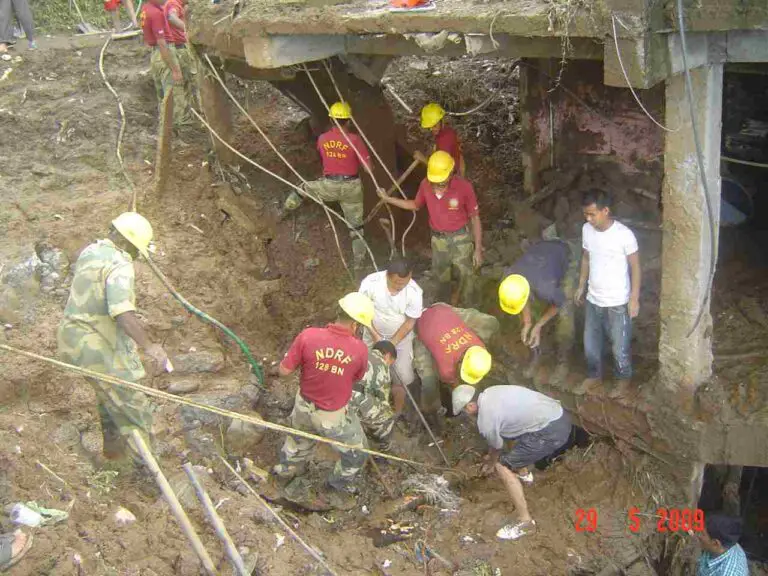5 Advantages of Soil Erosion Explained
Advantages of soil erosion are; nutrient distribution, vegetation stabilization, soil detoxification, landform modification, and geochemical cycling.
This article discusses the advantages of soil erosion, as follows;
1). Nutrient Distribution (as one of the Advantages of Soil Erosion)
Soil erosion is known to be a major cause of nutrients loss in soil, among other forms of environmental degradation [3].
However, there are some conditions under which erosion can help to distribute nutrients across a given area of land.
The first condition under which this can occur, is a condition of uneven soil nutrient distribution. In such a scenario, nutrients in the form of compost, mulch, or chemical fertilizer; are concentrated heavily in a defined area of land, while the concentration may be very low (relatively) in adjacent areas.
A condition like this is unfavorable to the health of soil and the optimal functioning of the entire ecosystem.
Erosion can resolve the problem of uneven nutrient distribution, when it occurs mildly or in a cyclic fashion.
Mild or cyclic erosion can occur under natural conditions of rainfall and wind energy dynamics, is barely noticeable and does not necessarily involve flooding, dust storms, or significant soil movement. It is relatively common in watersheds and coastal land areas.
It rather causes earth materials to be redistributed continuously within a given area, and can facilitate ecological sustainability.
In line with this effect, soil nutrients can be distributed from an area of excessive concentration, across a wider area, thereby reducing contamination (as a result of excessive nutrient accumulation) and boosting regional soil fertility.
2). Vegetation Stabilization
In sustainable farming, it is not uncommon to use plants as cover crops to protect soil from erosion [5].
This is both an aspect of general soil conservation, as well as a sustainable agricultural practice.
In sloping areas, methods like terracing and contour farming are used to control erosion [2]. The same occurs naturally in forests and grasslands, where vegetation serves as a tool for mitigating erosion and improving soil health.
In both natural ecosystems and agricultural lands, the continuous action of erosive agents improves plant characteristics.
This includes the development and efficiency of root structures, mechanical resilience of the entire plant, and natural selection of suitable flora species.
It is important to note that, according to the above explanation, soil and vegetation are simultaneously stabilized as a result of erosion.
However, this is only possible where the severity of erosion is mild or moderate. Extreme cases can lead to the destruction or loss of both vegetation and soil.

3). Soil Detoxification (as one of the Advantages of Soil Erosion)
Agents of soil erosion can detoxify the soil.
This may occur either through redistribution of soil, dissolution of contaminants, complete removal, or reduction of contaminant concentration.
In the case of redistribution, the severity of contamination in a given area can be reduced through erosion processes.
Complete soil removal implies that all contaminants in the soil are removed from their original position and transported away to a different location.
For soluble contaminants, these can easily be removed by erosion, especially where the erosive agent is water, and some degree of flooding occurs.
Also, plants which are cultivated to control erosion, can also serve as tools for removing soil contaminants. This is a form of bioremediation known as ‘phytoremediation’, whereby contaminants in soil are taken up by vegetation along with nutrients.
Toxins and contaminants that can be removed or reduced by erosion (directly of indirectly) include heavy metals and hydrocarbons.
It is however important to note that soil detoxification as an effect of erosion, often occurs alongside the disadvantages of soil erosion like leaching and land loss.
4). Landform Modification
Soil erosion is a major factor with regards to the development of landforms and the modification of the landscape.
This is because of the role of erosion in removing weathered materials from the point of weathering.
Erosion is a major factor in soil formation [1], which typically comprises of rock weathering and sediment removal. This process leads to changes in the geomorphology of any given land area where it occurs.
The significance of landform changes due to erosion, depends on the type of erosion, soil, and initial topographic conditions.
For example, sheet erosion leads to uniform removal of soil and may have relatively-low impact on topography, whereas gully erosion can causes significant land destruction.
Sloping areas are more prone to erosion in general, than relatively-flat areas; and less-resistant, exposed soils are more susceptible to severe erosion than resistant soils with vegetative covering.
Landform modification is associated with the formation of topographic features, as well as with sediment-based stormwater pollution.

5). Geochemical Cycling (as one of the Advantages of Soil Erosion)
Erosion plays a role in geochemical cycling of important elements like phosphorus, sulfur, carbon and nitrogen [4].
Alongside weathering, soil erosion facilitates various physical and chemical processes that can affect the availability and abundance of particular elements in a given area.
In terms of carbon dynamics, erosion is involved in the spontaneous recycling of CO2 between carbon sources and carbon sinks, and can either enhance or reverse the effects of carbon capture and storage by removing and depositing sediments.
Conclusion
Advantages of soil erosion are;
1. Nutrient Distribution
2. Vegetation Stabilization
3. Soil Detoxification
4. Landform Modification
5. Geochemical Cycling
References
1). Balasubramanian, A. (2017). “Soil Forming Processes.” Available at: https://doi.org/10.13140/RG.2.2.34636.00644. (Accessed 20 September 2022).
2). Dorren, L.; Rey, F. (2004). “A review of the effect of terracing on erosion.” Available at: https://www.semanticscholar.org/paper/A-review-of-the-effect-of-terracing-on-erosion-Dorren-Rey/7b56cbe53bce364953b4960348f8fc84962becdb. (Accessed 20 September 2022).
3). Mishra, P. K.; Rai, A.; Abdelrahman, K.; Rai, S. C.; Tiwari, A. (2022). “Land Degradation, Overland Flow, Soil Erosion, and Nutrient Loss in the Eastern Himalayas, India.” Land 11(2):179. Available at: https://doi.org/10.3390/land11020179. (Accessed 20 September 2022).
4). Quinton, J. N.; Govers, G.; Oost, K. V.; Bardgett, R. D. (2010). “The impact of agricultural soil erosion on biogeochemical cycling.” Nature Geoscience 3(5). Available at: https://doi.org/10.1038/ngeo838. (Accessed 19 September 2022).
5). Sharma, P.; Singh, A.; Kahlon, C. S.; Brar, A.; Grover, K. K.; Dia, M.; Steiner, R. (2018). “The Role of Cover Crops towards Sustainable Soil Health and Agriculture—A Review Paper.” American Journal of Plant Sciences 09(09):1935-1951. Available at: https://doi.org/10.4236/ajps.2018.99140. (Accessed 20 September 2022).





